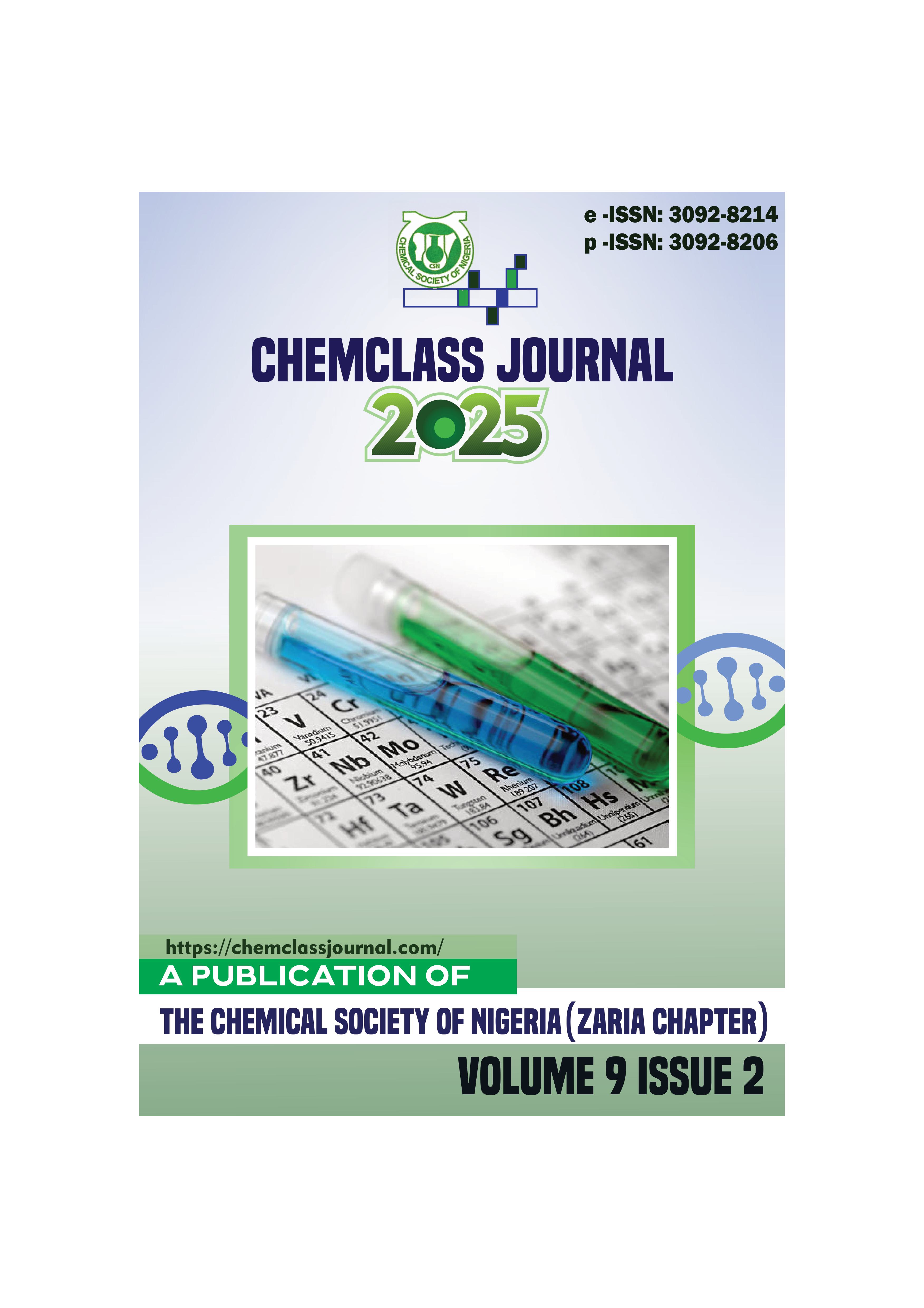Structural Analysis of the Bioactive Compounds in Momordica charantia (Bitter Melon) Leaf and Its Potential Medicinal Properties
DOI:
https://doi.org/10.33003/chemclass-2025-0902/185Keywords:
Phytochemicals , Mormodica charantia , GC-MS , structural activity relationship , medicinal properties , bioactive compoundsAbstract
Bioactive compounds present in Momordica charantia extract were isolated and characterized in order to
investigate the relationship of the structure’s functional groups and their medicinal properties. Soxhlet
extraction method was used to isolate bioactive compound using preferred solvents, both organic and
aqueous extract was characterized using GC-MS, while the bioactive compounds were identified based on the chirality of elucidated compounds and the Structural activity relationship of each identified bioactive compound present in Momordica charantia. The result revealed two identified bioactive compounds (squalene and Pyrimidine-4-fluoro-6-dimethylamine obtained in the plant’s petroleum ether solvent. Four bioactive compounds were obtained in the ethanol solvent namely: neophytadiene, 9,12,15-Octadecatrien-1-ol-(Z,Z,Z), 3,5,7-triamino-1-azaadamantane, Pyrimidine-4-fluoro-6-dimethylamine and 2-Dicyanomethylene-8H-pyrrolo[2,3-b]indole-3-carboxamide. The SAR study provides valuable insights into the specific functional groups in each bioactive compound and their potential therapeutic applications. The study shows the bioactive molecules may serve as lead molecules for new drug screening, for various diseases, including infections, cancer, and inflammatory disorders. The study verified the traditional medicine hypothesis that Momordica charantia extract has numerous medicinal properties and is a rich source of bioactive compounds.





 ChemClass Journal
ChemClass Journal
